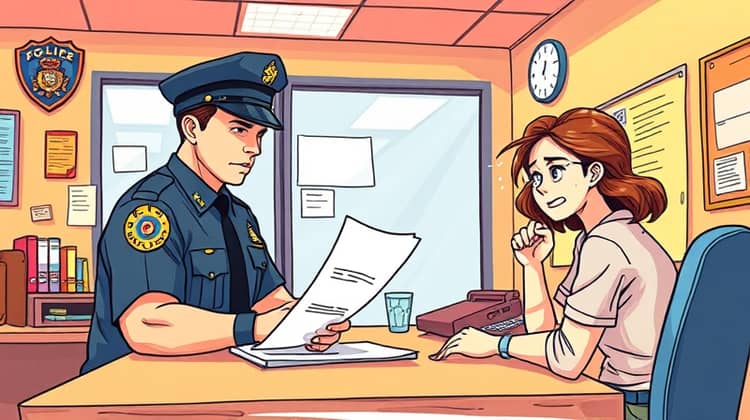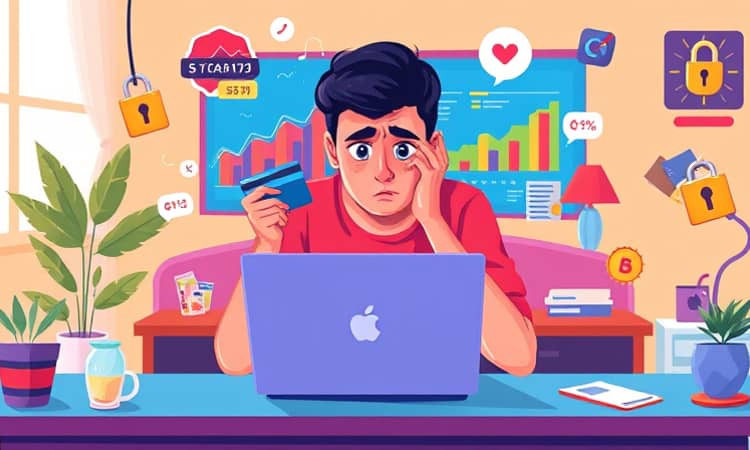Experiencing a credit card compromise can be an alarming situation, but knowing what steps to take can help minimize the damage and protect your financial well-being. The key is to remain calm, take immediate action, and stay proactive. In this article, we will outline the essential steps to take if you find out your credit card has been compromised.
Many people panic when they realize their credit card information has been stolen, but acting swiftly and thoughtfully can make a significant difference. From contacting your credit card issuer to monitoring your accounts, each step plays a crucial role in securing your finances.
By following these eight steps, you can effectively manage the crisis and reduce the chances of further fraudulent activity on your accounts. Your responsiveness will not only help you recover but also ensure that you stay protected moving forward.
1. Stay Calm and Assess the Situation

Finding out that your credit card has been compromised can cause panic and anxiety. However, it is essential to stay calm and take a moment to assess the situation. First, review recent transactions to identify any unauthorized charges that may have been made.
Next, check your credit card statements carefully for any suspicious activity that you might have missed. Make a note of the transactions that appear to be fraudulent, as you will need this information for your credit card issuer.
Remember that most credit cards offer fraud protection, which prevents you from being liable for unauthorized charges if reported promptly. Hence, taking swift action is critical in such situations.
2. Contact Your Credit Card Issuer

Once you have assessed the situation, the next step is to contact your credit card issuer immediately. They have dedicated teams trained to handle such cases and can assist you in taking the necessary actions to secure your account.
When you reach out, provide details about the unauthorized transactions you found, and follow their guidance on how to proceed. Be prepared to verify your identity, as they will need to confirm that you are the account holder.
- Inform them about the fraudulent transactions you spotted.
- Ask them to block your current card to prevent further unauthorized charges.
- Request a new card to be issued with a different number.
3. Monitor Your Accounts

After contacting your credit card issuer, it's crucial to consistently monitor your accounts, including your credit card statements and bank accounts. This scrutiny will help you catch any future unauthorized transactions early.
Consider setting up alerts for transactions on your accounts to receive notifications for any charges that occur. This proactive step allows for real-time awareness of your financial activities and provides extra security.
Make it a habit to review your account statements on a regular basis to ensure that everything is in order, and report anything that appears suspicious immediately.
- Regularly check bank and credit card statements for unauthorized charges.
- Set up alerts for transactions on your accounts.
- Review any recurring transactions to ensure they are legitimate.
4. Consider Freezing or Closing Your Card

If you notice significant fraudulent activity on your card, consider freezing your card temporarily or closing the account entirely. Freezing your card limits new charges but allows legitimate transactions to process, while closing the account will prevent any further activity altogether.
Discuss your options with your credit card issuer, as they can guide you through the process and help you understand the implications of each choice. This decision can help protect your financial security in the event of a severe compromise.
5. Update Automatic Payments and Subscriptions

If you have automatic payments or subscriptions linked to your compromised card, ensure that you update your billing information with your new card details. Failing to do so could result in missed payments, penalties, or interrupted services.
Contact the service providers and update your payment information immediately to avoid any service disruptions.
- Notify your internet service provider of the new card details.
- Contact your subscription services such as streaming platforms or e-commerce sites.
- Update any bill pay accounts with the new card information.
6. Check Your Credit Reports

It's advisable to check your credit reports after a potential card compromise. You are entitled to a free credit report once a year from each of the three major credit bureaus: Experian, TransUnion, and Equifax.
Review your reports for any accounts or inquiries that you do not recognize.
However, should you spot any discrepancies, report them immediately.
- Request free credit reports from each of the three major credit bureaus.
- Look for unauthorized accounts or inquiries.
- Report any discrepancies you find.
Keeping an eye on your credit report not only helps detect ongoing issues stemming from the compromised card, but also provides a broader look at your financial health.
7. File a Police Report if Necessary

If your credit card was compromised due to theft, consider filing a police report. This report can provide official documentation that may be required by your credit card issuer or for future reference while resolving identity theft issues.
Additionally, having a police report can help substantiate your claims when disputing unauthorized charges. A written record will reinforce the seriousness of the situation.
8. Stay Vigilant

Even after taking all necessary actions, it's crucial to remain vigilant. Cybersecurity threats continue to evolve, and being alert can safeguard you from future compromises.
Stay updated on best practices for protecting your financial information, including the use of secure passwords and being cautious of potential phishing scams that might target you. Regularly monitoring your financial statements can help you stay one step ahead of potential fraudsters.
- Be cautious of suspicious emails or messages requesting your financial info.
- Regularly update passwords for online banking and shopping accounts.
- Consider subscribing to an identity theft protection service.
By maintaining awareness of your financial activities, you can prevent future issues and protect your assets. Staying informed and vigilant is your best defense against ongoing threats.














